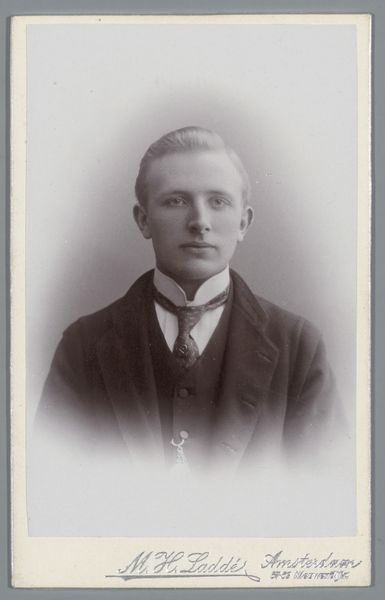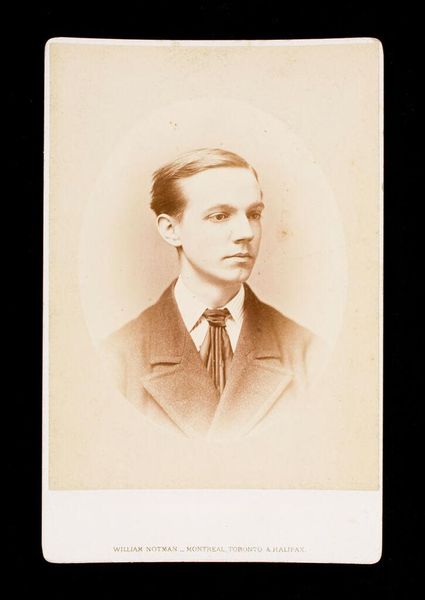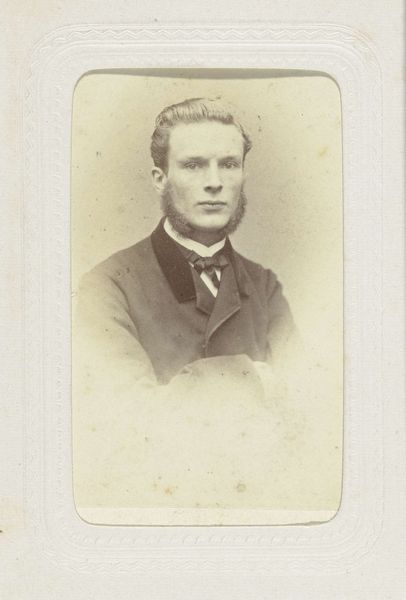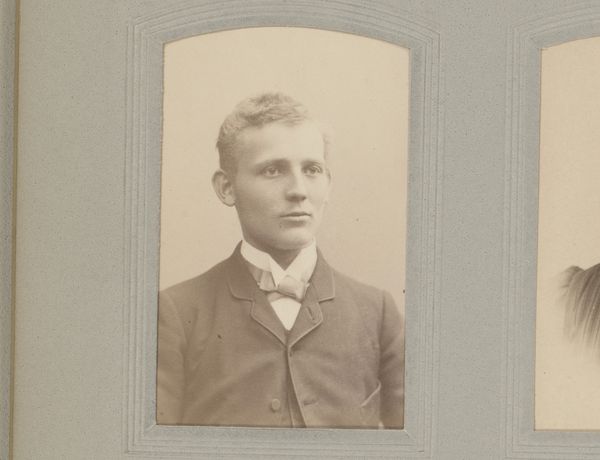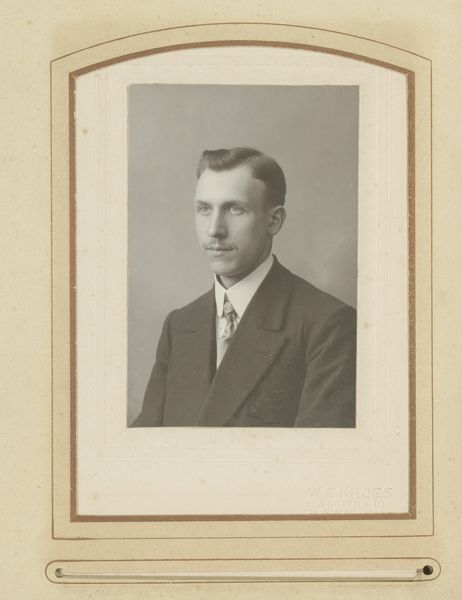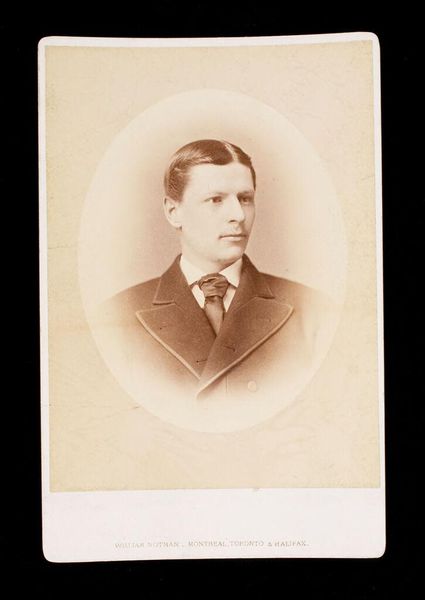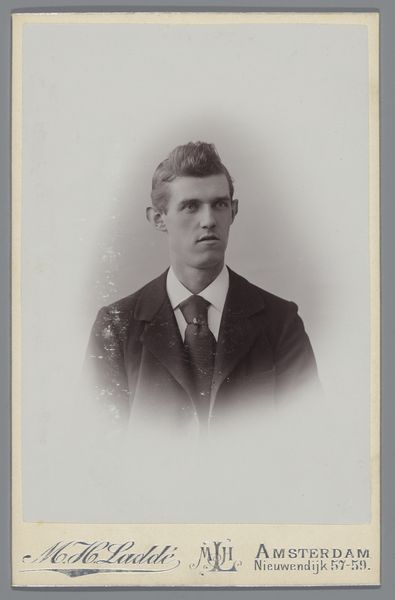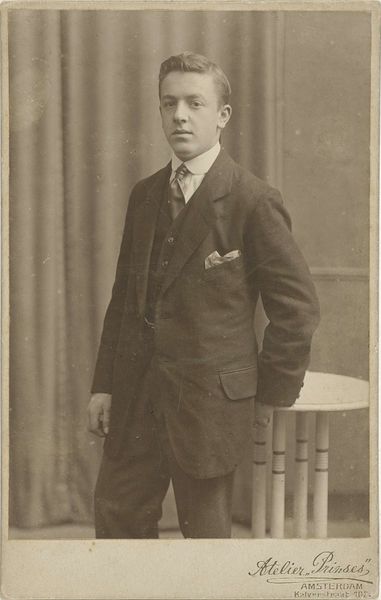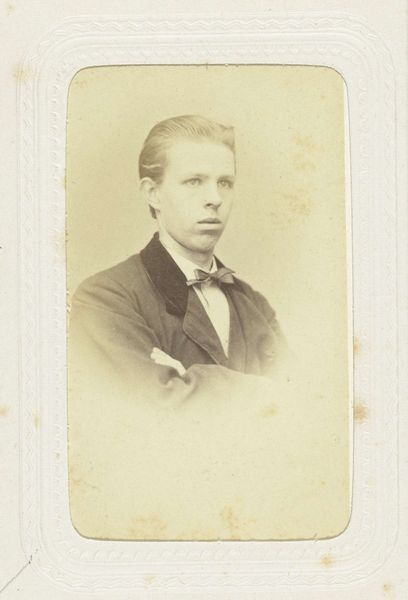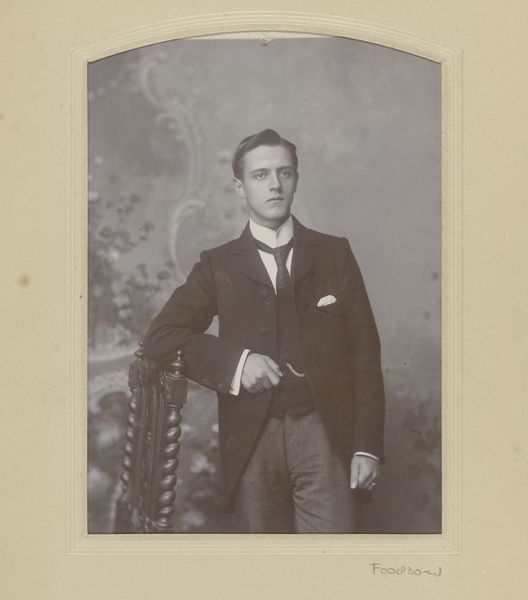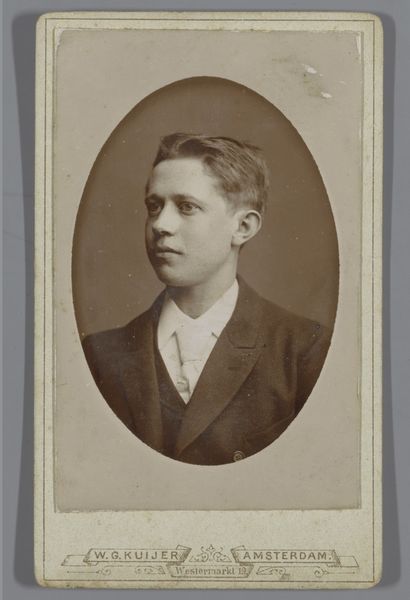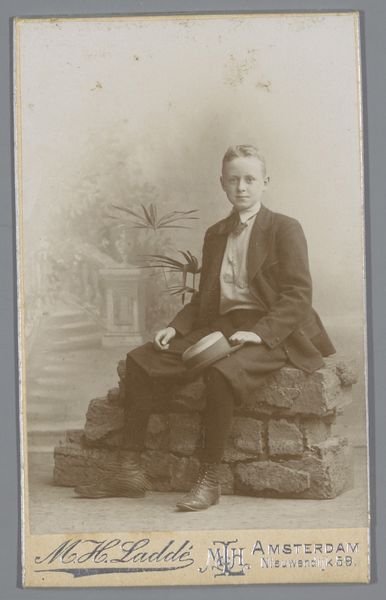
photography, gelatin-silver-print
#
portrait
#
self-portrait
#
portrait image
#
photography
#
historical photography
#
gelatin-silver-print
#
modernism
Dimensions: height 145 mm, width 95 mm, height 297 mm, width 200 mm
Copyright: Rijks Museum: Open Domain
Curator: This is an oval studio portrait of an unknown man, likely produced between 1915 and 1930. The gelatin silver print is the work of Machiel Hendricus Laddé. Editor: It’s a compelling image; his gaze is so direct, yet there’s also something very melancholy about it. The sepia tones and the oval frame contribute to that sense of wistful longing, I think. Curator: It’s interesting you mention that. Studio portraiture during this period became increasingly democratized. Photographs were becoming a way for individuals from varied social classes to participate in image-making, not just the wealthy elite. This form became a crucial social practice. Editor: Yes, and considering the means of production—the studio, the lighting, the chemical process of gelatin silver printing—it represents a significant shift from hand-painted portraits. The rise of photography created jobs. Laddé's studio itself would have employed skilled laborers. Curator: Precisely. The rise of commercial studios meant portraiture served a public function. But more than a record, it's often about presenting a specific social image or aspiration. How the sitter wishes to be seen by society and by future generations. Editor: You're right; his neat suit and tie suggest middle-class respectability. Although it's mass-produced, so to speak, that gelatin silver print is also very precious, wouldn't you say? A tangible object that captures a moment in time and transmits social codes. Look at that detail of his silk handkerchief. Curator: Indeed. Consider also the institutional context: its presence here, in the Rijksmuseum, elevates what was once a fairly accessible commodity into a valued object, worthy of preservation and scholarly attention. Editor: I'm intrigued by the thought of how this photograph shaped ideas around identity. From a material point of view, the photograph allowed mass reproducibility, transforming representation. The whole thing makes you wonder: who was this man, what was his trade, his world? Curator: That's the eternal question posed by these kinds of historical portraits, isn’t it? Editor: Exactly. This ordinary object is now freighted with social, political, and cultural relevance. It goes beyond merely likeness and composition. It represents labor, capital, and a shared humanity.
Comments
No comments
Be the first to comment and join the conversation on the ultimate creative platform.
